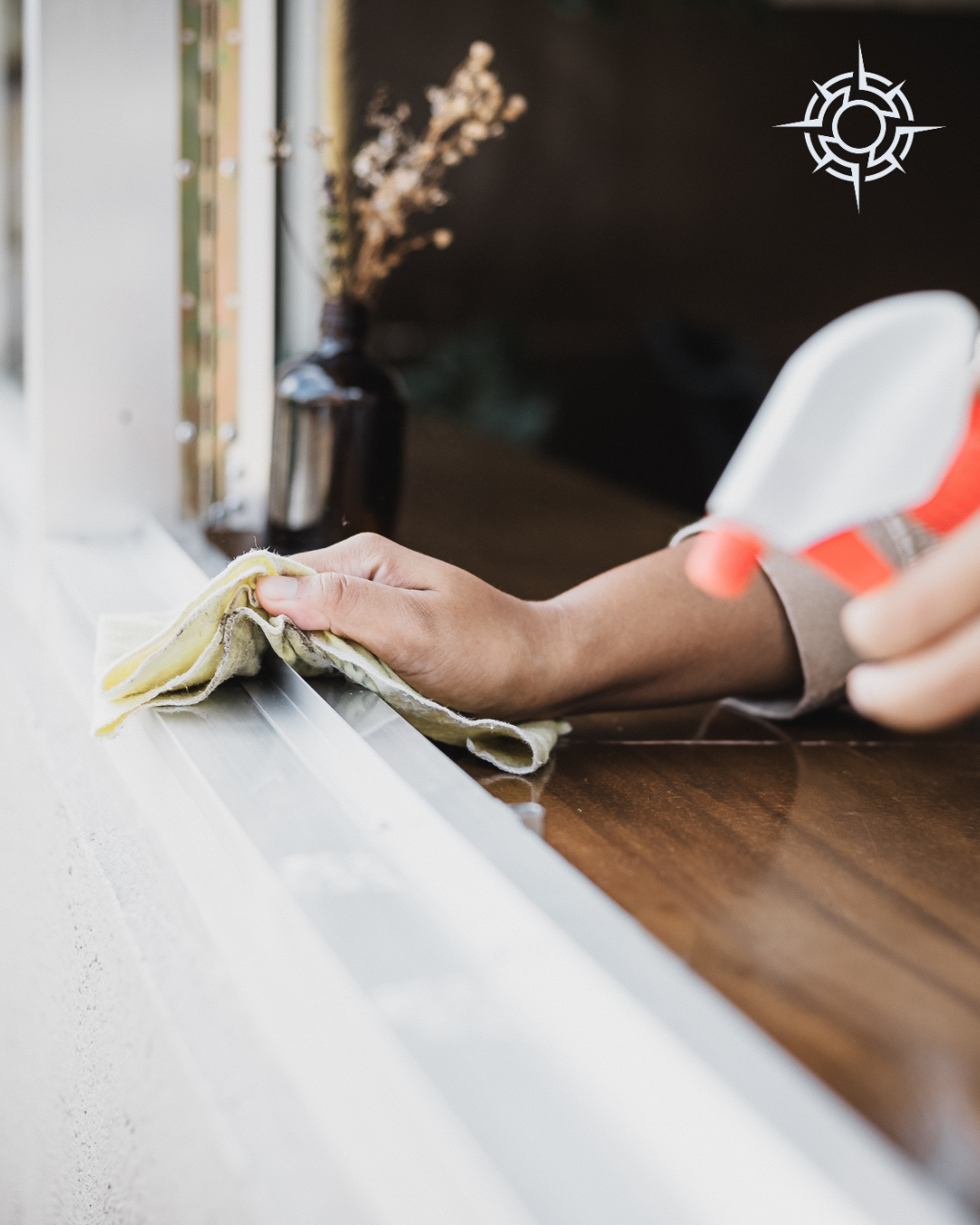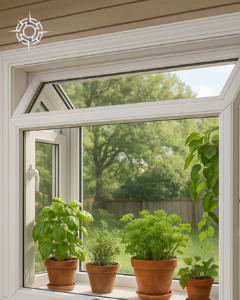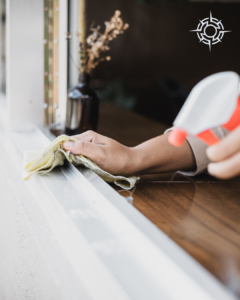The Hidden Costs of Damaged Window Sills
You might assume your home is energy efficient because you’ve already invested in modern, energy-saving windows. But if your window sills are cracked, rotted, or moisture-damaged, your energy bills may still be higher than they should be. Even with brand-new windows, a deteriorating window sill can allow air and water to enter your home, leading to costly issues like mold, damaged drywall, and wood rot. This can lead to the need for a full window replacement.
This article will help you determine when a damaged sill can be repaired, when it should be replaced, and what warning signs to look for. By acting early, you can protect your investment in your windows, enhance your home’s appearance, and prevent more serious—and expensive—damage later.
Can You Repair a Window Sill Instead of Replacing It?
Not every damaged window sill needs to be fully replaced. In some cases, small surface-level cracks or minor chips can be repaired with wood filler or epoxy. These materials are designed to bond with the existing wood and provide a seamless patch once sanded and painted. This is especially true for interior sills where exposure to the elements is limited.
However, repairs are only a short-term solution if deeper damage is present. If the wood has started to feel soft, sponge-like, or if there’s visible rot, it’s no longer structurally sound. In these cases, the only reliable solution is to replace the window sill entirely. Continuing to patch a sill that’s past its prime can lead to long-term issues like hidden mold, water intrusion, and even compromised window support.
A professional inspection can help determine whether a simple repair will do or whether it’s time to fully replace a rotted window sill. Remember, choosing the right option now can save you from much more expensive repairs later.
Energy Savings and Curb Appeal from a New Window Sill
One of the less obvious benefits of replacing a damaged window sill is energy savings. A tight, properly sealed window frame—including the sill—prevents unwanted air exchange between the interior and exterior of your home. Drafts are one of the main culprits behind rising heating and cooling costs, especially in older homes or those with unmaintained window assemblies.
By replacing a damaged sill, you help seal up one of the most vulnerable parts of your home envelope. That means your HVAC system doesn’t have to work as hard to maintain your desired temperature, leading to measurable reductions in your energy bills.
Additionally, a clean, freshly painted window sill exterior adds to the overall appearance of your home. Peeling paint, warped wood, and rot are not only unsightly—they send a message that your home isn’t well maintained. Replacing the sill can boost curb appeal, particularly if you’re considering selling your home in the future. It’s a small upgrade that makes a big visual and practical difference.
Why a Window Sill’s Structural Integrity Matters
A window sill isn’t just a decorative ledge—it’s a crucial part of your home’s envelope. It helps direct rainwater away from the wall, supports the weight of the window frame, and serves as the base for sealing and insulation. If your sill becomes compromised, the entire window system is at risk.
A deteriorating sill can cause the window to shift or become misaligned, leading to trouble opening or closing the window properly. This movement also creates gaps where air and moisture can seep in, weakening the surrounding framing and drywall over time. In severe cases, water intrusion caused by a faulty sill can travel down into wall cavities, affecting insulation and creating ideal conditions for mold growth.
Because the sill is a load-bearing surface, it needs to remain strong and dry. If it becomes soft or deteriorated due to rot, the entire window structure may lose its integrity, putting your home at risk for more serious structural damage.
In short, if you’re wondering whether to replace a window sill, remember that it’s not just about aesthetics—it’s about maintaining the structural strength and efficiency of your home’s building envelope.
When to Replace a Rotted or Moisture-Damaged Sill
When it comes to moisture, the time to act is now. If your window sill shows signs of rot, it’s no longer doing its job of supporting the window or keeping water out of your home.
Rot usually starts as soft spots in the wood, often at corners or in areas where water is known to pool. Over time, the wood fibers break down, allowing water to penetrate even further into the frame and wall structure. This creates a dangerous domino effect: as the sill weakens, more water enters, more wood is exposed, and soon you’re dealing with a much larger—and more expensive—repair.
Worse yet, moisture-damaged sills can become a breeding ground for mold, especially if they’ve been neglected for multiple seasons. Mold isn’t just a cosmetic issue—it’s a serious health hazard. Remediation is costly, invasive, and in many cases, preventable with early intervention.
If your sill has dark staining, flaking paint, or visible fungal growth, it’s likely that moisture has already breached the material. A window sill replacement is far more affordable than rebuilding an entire wall system or paying for mold remediation.
How to Identify If Your Window Sill Needs Replacement
Not sure whether your sill is in trouble? Here are the key signs your window sill needs to be replaced:
- Soft or spongy wood: Press the surface with a screwdriver or your finger. If it gives easily, rot is present.
- Cracks or holes: While small surface cracks can sometimes be patched, deeper holes usually mean underlying damage.
- Peeling paint or bubbling finish: These are signs that moisture is trapped beneath the surface.
- Mold or mildew smells near the window: This often indicates moisture intrusion behind the wall.
- Visible rot or discoloration: Black, gray, or green spots on the sill may be mold or water damage.
- Window doesn’t sit properly in the frame: If the sill is sagging or deteriorating, the window can shift or tilt.
If you notice one or more of these signs, it’s time to schedule an evaluation. Whether you DIY or call a professional, the sooner you act, the better you’ll protect your home.
Protect Your Home with Timely Sill Replacement
A damaged or rotted window sill can do more than just let in a draft—it can quietly compromise your home’s structure, increase your utility bills, and even impact your health. Replacing a worn-out sill isn’t just worth it—it’s one of the smartest, most cost-effective home maintenance steps you can take.
At Compass Exteriors, we know how to identify early warning signs, replace rotted window sills, and protect your home from further damage. Whether you’re looking for an exterior upgrade, a full window replacement, or just peace of mind, we’re here to help—on time, on budget, and with lasting results.
Contact Compass Exteriors today to schedule your window sill assessment and protect your home from the ground up.













